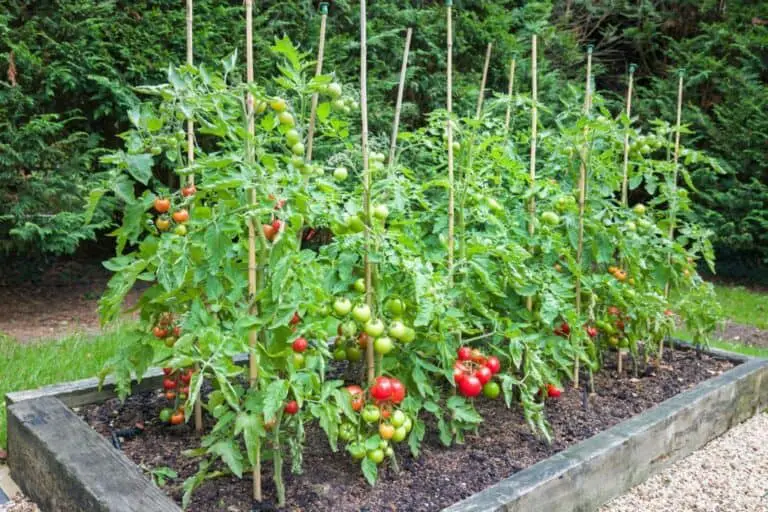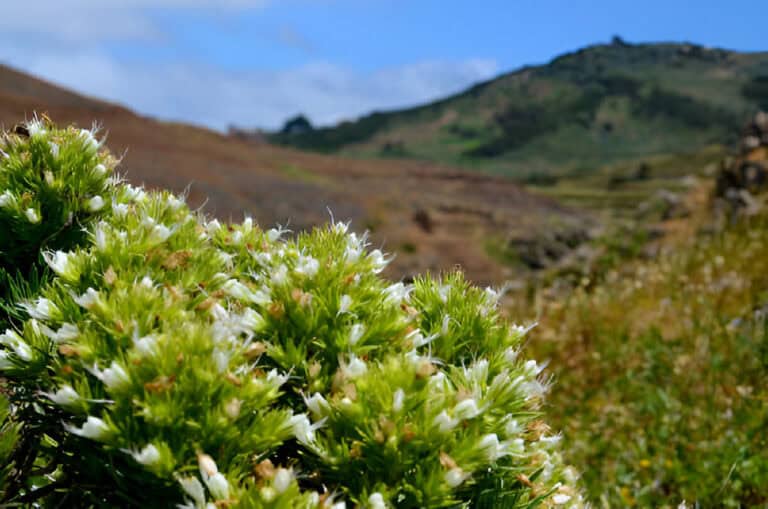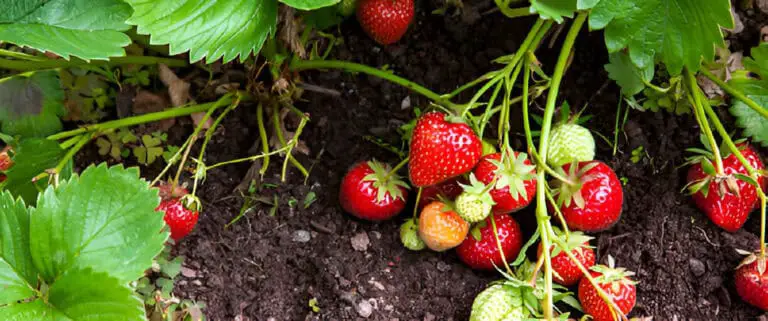How Many Brussels Sprout Plants per Person? Optimal Plant-to-Person Ratio
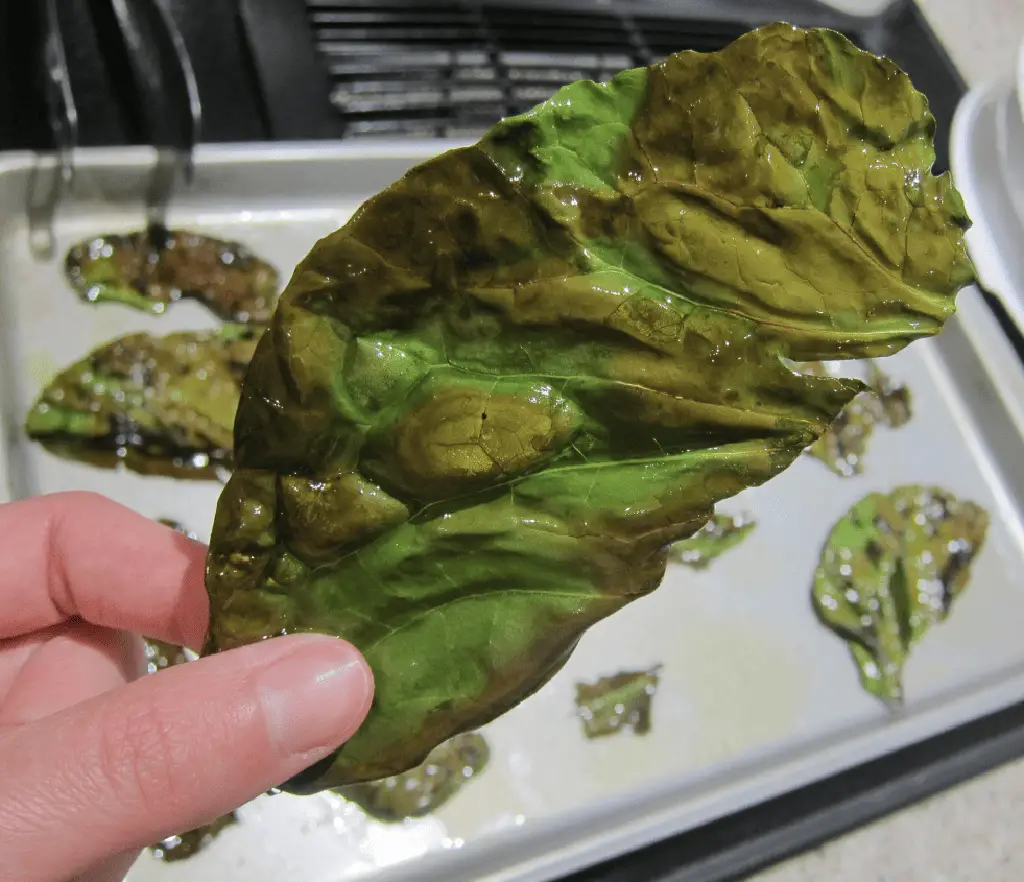
Brussels sprouts, those adorable mini-cabbages that pack a flavorful punch, have been gaining popularity in kitchens everywhere. But if you’re considering growing your own bountiful Brussels sprout harvest, you might be wondering: how many plants should you sow per person?
Finding the optimal plant-to-person ratio is the key to ensuring an abundant supply of these delectable greens for your household.
Imagine strolling through your backyard garden, plucking fresh Brussels sprouts from flourishing plants, and savoring their crisp, nutty goodness on your plate. With a little planning and the right information, you can turn this vision into a reality.
In this article, we’ll delve into the factors that influence the plant-to-person ratio, such as individual consumption, yield per plant, and garden space considerations. We’ll provide you with practical tips and insights to help you determine how many Brussels sprout plants you should sow per person.
So, get ready to unearth the secrets to a successful Brussels sprout garden that will keep you and your loved ones happily feasting on these delightful veggies all season long.
Factors Affecting Brussels Sprout Plant-to-Person Ratio
When calculating the optimal plant-to-person ratio for Brussels sprouts, it’s crucial to consider several factors that can influence the yield and overall success of your harvest. These factors include:
- Average consumption of Brussels sprouts per person: Understanding how much Brussels sprouts an individual typically consumes is essential for determining the number of plants required.
- Cultivation method (indoor or outdoor): Whether you plan to grow Brussels sprouts indoors or outdoors will impact the plant density and space requirements.
- Space availability for growing Brussels sprouts: The amount of space you have available for cultivation will influence the number of plants you can accommodate.
- Growing season and duration: The length of the growing season and the duration required for Brussels sprouts to reach maturity will affect the plant-to-person ratio.
- Harvesting and storage considerations: Factors such as the frequency of harvesting Brussels sprouts and storage capacity should be taken into account when determining the optimal ratio.
More: Eating Bad Brussels Sprouts: What Will Happen to You?
Calculating the Optimal Brussels Sprout Plant-to-Person Ratio
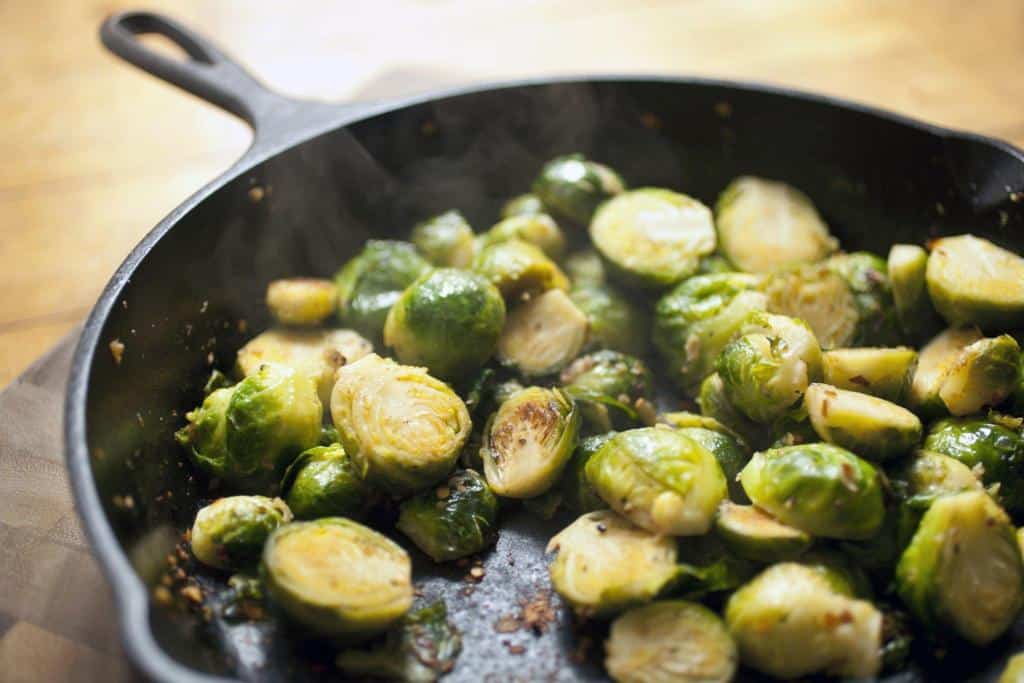
To calculate the ideal Brussels sprout plant-to-person ratio, follow these steps:
- Determine the desired yield per person: Consider how many Brussels sprouts you would like each person to have during the harvesting period.
- Estimate the average yield per Brussels sprout plant: Research the average yield per plant for the specific Brussels sprout variety you plan to grow. This information is often available from seed catalogs or gardening resources.
- Calculate the number of plants required per person: Divide the desired yield per person by the average yield per plant to determine the number of plants needed.
- Adjust the ratio based on personal preferences and consumption habits: Take into account individual preferences and habits. If a person consumes Brussels sprouts more frequently or desires a larger quantity, you may need to increase the plant-to-person ratio accordingly.
How Many Brussels Sprout Plants per Person?
When it comes to determining how many Brussels sprout plants to grow per person, the numbers can vary depending on different sources and factors. However, based on the general consensus, it is recommended to allocate 1 to 2 plants per person.
This allocation has been found to yield approximately 3 to 5 pounds of Brussels sprouts per 10-foot row. Keep in mind that various factors, such as growing conditions and personal preferences, affect these estimates.
It’s important to note that each Brussels sprout plant has the potential to produce up to 3 pounds of sprouts. Under ideal circumstances, a single plant can yield an impressive harvest of as many as 50 sprouts.
However, achieving such high yields requires providing the plants with optimal growing conditions. Brussels sprouts thrive in a long growing season, rich and well-drained soil, and consistent moisture. Additionally, they tend to prefer cooler temperatures and may struggle in hot weather conditions.
To ensure successful growth, each Brussels sprout plant should be given ample space, with a minimum of 18 inches of room between plants. This spacing allows the plants to develop fully and encourages better air circulation, reducing the risk of disease. As the sprouts mature, it is recommended to remove the lower leaves to focus the plant’s energy on developing robust sprouts.
Indoor Cultivation: Brussels Sprout Plant-to-Person Ratio
Indoor cultivation of Brussels sprouts allows you to enjoy these nutritious veggies year-round. When determining the plant-to-person ratio for indoor growing, consider the following:
- Ideal plant density for indoor Brussels sprout cultivation: Brussels sprouts require adequate space for proper growth. Aim for a density that allows each plant to receive sufficient light and airflow.
- Container size and spacing requirements: Choose containers that are large enough to accommodate the root systems of Brussels sprout plants. Follow spacing recommendations provided by seed suppliers or gardening references.
- Light and temperature considerations for optimal growth: Provide ample light for your indoor Brussels sprouts using grow lights or by placing them in a well-lit area. Maintain temperatures between 60-70°F (15-21°C) for optimal growth.
- Managing humidity and air circulation in indoor settings: Proper air circulation helps prevent disease and promote healthy growth. Use fans or ensure a gentle breeze in the growing area. Monitor humidity levels and provide adequate ventilation to avoid excessive moisture.
Outdoor Cultivation: Brussels Sprout Plant-to-Person Ratio
For those fortunate enough to have outdoor space for Brussels sprout cultivation, optimizing the plant-to-person ratio is crucial. Consider the following factors:
- Recommended plant spacing and row arrangement in outdoor gardens: Brussels sprouts require adequate spacing to ensure optimal growth and airflow. Typically, allow 18–24 inches (45–60 cm) between plants in a row, with rows spaced 24-36 inches (60–90 cm) apart.
- Soil preparation and fertility requirements: Prior to planting, prepare the soil by incorporating organic matter and ensuring proper drainage. Conduct a soil test to determine if any amendments or fertilizers are needed to provide essential nutrients for Brussels sprout growth.
- Sun exposure and microclimate considerations: Brussels sprouts thrive in full sun, requiring at least 6 hours of direct sunlight daily. Consider the microclimate of your outdoor space, such as nearby structures or trees that may cast shade, and choose a location that offers maximum sunlight.
- Pest and disease management strategies: Brussels sprouts are susceptible to pests such as aphids, cabbage worms, and slugs. Implement organic pest control methods, such as companion planting with repellent herbs or utilizing physical barriers. Monitor for signs of disease and promptly address any issues with appropriate treatments.
Maximizing Yield: Tips for Increasing the Plant-to-Person Ratio
To maximize the Brussels sprout plant-to-person ratio and ensure a bountiful harvest, consider the following tips:
- Select high-yielding Brussels sprout varieties: Choose varieties known for their productivity and high yield potential. Look for information on yield performance when selecting seeds or seedlings.
- Implement proper fertilization and watering techniques: Provide adequate nutrients through regular fertilization using organic compost or balanced fertilizers. Water consistently to maintain soil moisture without waterlogging, as uneven moisture can affect the sprouts’ development.
- Pruning and staking methods for supporting plant growth: As the Brussels sprout plants grow, remove lower leaves to allow energy to focus on sprout production. Additionally, consider staking or providing support to prevent plants from toppling over in windy conditions.
- Extending the growing season through succession planting: Brussels sprouts have a long growing season, and by using succession planting, you can stagger the maturity dates of different plantings. This ensures a continuous supply of fresh Brussels sprouts throughout the season.
By following these strategies, you can optimize the plant-to-person ratio and increase the yield of your Brussels sprout harvest, providing an abundance of delicious and nutritious vegetables.
Harvesting and Storing Brussels Sprouts
When it comes to harvesting and storing Brussels sprouts, a few key considerations can ensure the best quality and longevity of your harvest.
- Determining the optimal time for harvesting Brussels sprouts: Brussels sprouts should be harvested when the sprouts are firm and about 1 to 2 inches in diameter. Timing can vary depending on the variety and personal preference.
- Proper harvesting techniques to ensure plant health: Use a sharp knife or pruning shears to cut the sprouts from the stalk, starting from the bottom and working upwards. Avoid damaging the plant while harvesting.
- Post-harvest handling and storage guidelines: Remove any damaged or discolored sprouts and wash them gently. Dry them thoroughly before storage to prevent mold formation. Store in a perforated plastic bag in the refrigerator for up to three weeks.
- Freezing or preserving Brussels sprouts for long-term use: Blanch the sprouts in boiling water for a few minutes, then cool them in an ice bath. Drain, pat dry, and pack them in airtight containers or freezer bags. They can be stored in the freezer for up to 12 months.
Alternative Approaches to Brussels Sprout Planting
Innovative planting techniques can help optimize the plant-to-person ratio and maximize Brussels sprout production. Consider these alternative approaches:
- Companion planting with other vegetables for efficient space utilization: Planting compatible vegetables like carrots, onions, or herbs alongside Brussels sprouts can help maximize space while providing benefits such as pest control or nutrient sharing.
- Intercropping Brussels sprouts with beneficial plants: Interplanting Brussels sprouts with plants that attract pollinators or repel pests can create a symbiotic relationship, benefiting both the Brussels sprouts and the companion plants.
- Vertical gardening techniques to maximize plant density: Utilize trellises, cages, or vertical structures to train the Brussels sprout plants to grow vertically. This method saves space and allows for higher plant density, increasing the plant-to-person ratio.
- Hydroponic or aquaponic systems for controlled cultivation: Consider hydroponic or aquaponic systems that provide a controlled environment for growing Brussels sprouts. These systems optimize resource utilization, eliminate the need for soil, and can result in higher yields.
Customizing the Plant-to-Person Ratio Based on Dietary Preferences
Every individual has different dietary preferences and consumption habits. Here are some ways to customize the plant-to-person ratio to accommodate varying needs:
- Adjusting the ratio for individuals with higher or lower Brussels sprout consumption: If you or someone in your household consumes Brussels sprouts more frequently, you may want to increase the plant-to-person ratio. Likewise, if Brussels sprouts are consumed less frequently, a lower ratio might be suitable.
- Adapting the ratio for different cooking methods and recipes: Consider the versatility of Brussels sprouts in various recipes. If you frequently cook Brussels sprouts as a main dish or use them in multiple recipes, you might need a higher plant-to-person ratio to ensure an ample supply.
- Considering the nutritional value and health benefits of Brussels sprouts: Brussels sprouts are rich in vitamins, minerals, and fiber. If you prioritize their nutritional value and health benefits, it may be beneficial to increase the plant-to-person ratio to incorporate them more frequently into meals.
- Incorporating Brussels sprouts into specific diets (e.g., vegetarian, vegan): Brussels sprouts are a valuable addition to vegetarian or vegan diets, providing essential nutrients. Adjust the plant-to-person ratio to accommodate the increased consumption of Brussels sprouts in these dietary choices.
FAQs
How many Brussels sprouts should I plant per person?
The number of Brussels sprout plants per person depends on factors such as average consumption, cultivation method, and space availability. Calculating the desired yield per person and the average yield per plant can help determine the appropriate ratio.
Can I grow Brussels sprouts indoors?
Yes, Brussels sprouts can be grown indoors. Indoor cultivation requires considerations such as ideal plant density, container size, light and temperature requirements, and managing humidity and air circulation.
When is the best time to harvest Brussels sprouts?
Brussels sprouts are typically ready for harvest when the sprouts are firm, green, and about 1-2 inches (2.5-5 cm) in diameter. Harvesting time can vary depending on the variety and growing conditions, but generally occurs in the late fall or early winter.
How long can I store Brussels sprouts after harvesting?
Brussels sprouts can be stored after harvesting for an extended period if proper storage conditions are maintained. When stored in the refrigerator, Brussels sprouts can last for up to 3 weeks. Ensure that the sprouts are dry and stored in a perforated plastic bag to maintain optimal humidity levels. Alternatively, you can blanch and freeze Brussels sprouts for long-term storage, which can keep them fresh for up to 12 months.
What are some common pests and diseases that affect Brussels sprouts?
Brussels sprouts are prone to pests such as aphids, cabbage worms, and slugs. Diseases that can affect Brussels sprouts include clubroot, blackleg, and powdery mildew. Implementing preventive measures like proper sanitation, regular inspection, and organic pest control methods can help manage these issues effectively.
Can I adjust the plant-to-person ratio based on dietary preferences?
Yes, the plant-to-person ratio can be customized based on individual dietary preferences. If someone consumes Brussels sprouts more frequently or desires a larger quantity, the ratio can be adjusted accordingly. Consider the nutritional value and health benefits of Brussels sprouts when determining the appropriate amount to accommodate specific dietary needs.



